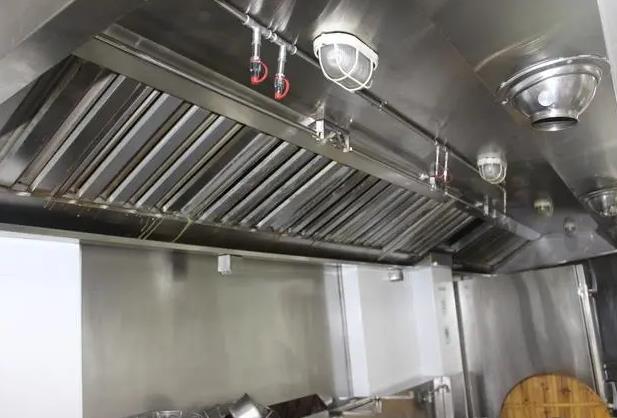
First, the threat of fire
Fire is a dangerous event that can happen at any time. Especially in the kitchen, the fire threat is more obvious, as the following factors can all start a fire:
Cooking with open flame: Open flame cooking is a common cooking method in the kitchen, but open flame may cause fire under careless operation.
Hot oil: Frying food at high temperatures is a daily task in the kitchen, however, improper oil temperature or cooking time for too long can cause the oil temperature to rise, which in turn can cause a fire.
Electrical failure: There are various electrical equipment in the kitchen, such as electric stove, microwave oven, oven, etc., their failure may cause fire.
Gas leaks: Natural gas or liquefied petroleum gas (LPG) is widely used in kitchens, and the leaking gas can cause an explosion or fire under certain conditions.
Debris accumulation: The kitchen usually has a large number of debris, such as paper towels, cartons, plastic bags and other flammable materials, once burned up, the fire quickly spread.
These factors make the kitchen a high-risk area for fire, so proper precautions need to be taken to ensure fire safety.
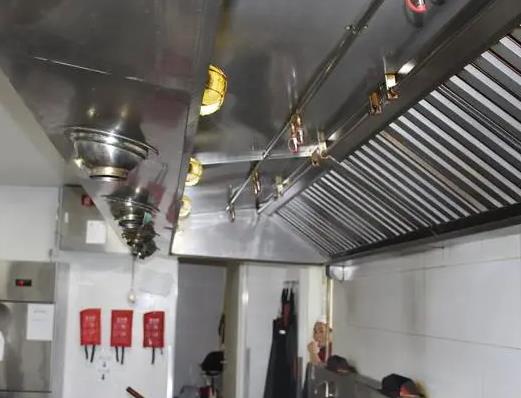
Second, the role of kitchen fire nozzle
A kitchen fire nozzle is a special automatic fire extinguishing device designed to respond quickly in the event of a fire, providing fire control and extinguishing. They play a vital role in the kitchen, and here are their main roles:
Quick fire suppression: Kitchen fire nozzles can quickly detect the source of the fire and release the extinguishing agent in the early stage of the fire. This helps contain the fire and prevents it from spreading throughout the kitchen or other parts.
Automatic activation: Kitchen fire nozzles are usually automatically activated without human intervention. They are triggered based on the heat of the fire, which means that a fire can be responded to in time even if no one is present.
Liquid fire extinguishing agents: Kitchen fire nozzles usually use liquid fire extinguishing agents, such as dry powder or foam, which are suitable for extinguishing different types of fire sources, including open and oil fires.
Stop the spread of fire: Due to its quick response and extinguishing ability, kitchen fire nozzles help stop the spread of fire and reduce the damage caused by fire.
Easy to operate: Once the fire nozzle is activated, no additional human intervention is usually required. This means that even in the event of a fire, people can quickly evacuate the danger area, increasing the chances of escape.
Prevent reignition: The extinguishing agent of the kitchen fire nozzle can cover the area around the fire source and prevent reignition, thus providing additional safety.
Reduce damage: The kitchen is an important area in the house, and a fire can cause serious injuries and property damage. The role of kitchen fire nozzles is to minimize these losses.
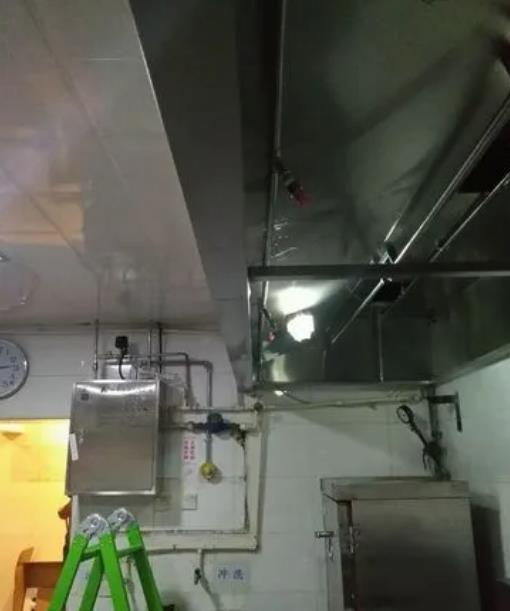
Three, the type of kitchen fire nozzle
After understanding the role of kitchen fire nozzles, let's take a look at the different types of kitchen fire nozzles. According to their design and function, kitchen fire nozzles can be divided into the following main types:
Fire Extinguishing System (ANSUL system) : This is a system commonly used in commercial kitchens, especially those that require frequent handling of hot oil. It includes fire detectors, extinguishing agents and automatic activation devices to respond quickly in the event of a fire.
Dry powder nozzle: This nozzle is usually used to extinguish open flames, such as open flames on stoves or open fire cooking equipment. They use dry powder as a fire extinguishing agent, which can effectively extinguish fire sources.
Foam heads: Foam heads are suitable for putting out oil fires because the foam can cover the surface of the oil and prevent oxygen from entering the fire source, thus extinguishing the fire.
Fire detector: The fire detector triggers the activation of the fire nozzle when it detects smoke, heat, or flame. They act as an early detection of fire sources, so as to respond to fires in advance.
Heat-sensitive nozzles: These nozzles are triggered based on temperature, and when the ambient temperature rises above a certain level, they activate and release a extinguishing agent.
High-pressure nozzle: High-pressure nozzle uses high-pressure water or liquid extinguishing agent, which can extinguish fire sources with higher speed and pressure. They are suitable for some special environments or high-risk areas.
Different types of nozzle heads can be selected according to specific kitchen needs and risks to provide the best fire protection.

Four, kitchen fire nozzle maintenance and maintenance
The effectiveness of kitchen fire nozzles depends on regular maintenance and maintenance. Here are some key steps to maintaining kitchen fire nozzles:
Regular inspection: Check the fire nozzle regularly to ensure that it is in good condition. Check for any signs of damage, blockage or corrosion. If you find a problem, repair or replace it immediately.
Cleaning: Keep the nozzle clean to avoid the accumulation of dust, grease or other dirt on it. These filth may affect the normal operation of the nozzle.
Test: Perform regular tests to ensure that the fire nozzle can activate properly and release the extinguishing agent. If you find a problem during testing, take immediate steps to fix it.
Replacement parts: If any parts of the nozzle are worn or aged, replace them promptly. This includes nozzle heads, connecting pipes, extinguishing agent containers, etc.
Maintenance records: Maintain maintenance records, including the maintenance date and content. This helps keep track of the status of the nozzle and ensures that it works properly when needed.
Training: Train kitchen staff on how to properly use and maintain kitchen fire nozzles. This can improve the efficiency of fire response.
Maintaining fire nozzles is a key step in ensuring their effectiveness and cannot be ignored. Investing some time and resources in maintenance can greatly improve the level of fire safety in your kitchen.
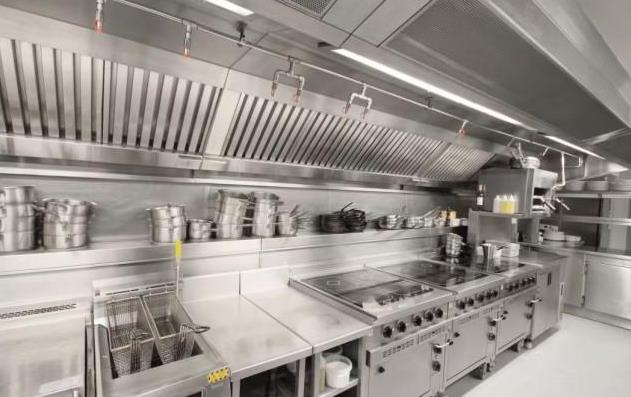
Five. Fire response strategies
In addition to installing and maintaining kitchen fire nozzles, a proper fire response strategy needs to be developed. Here are some key strategies and tips:
Install smoke detectors: Install smoke detectors in the kitchen and adjacent rooms to detect fire sources in advance.
Fire extinguishers: Keep available fire extinguishers in the kitchen and make sure the staff knows how to use them properly.
Evacuation Plan: Have a fire evacuation plan and make sure all employees and family members know how to escape. Practice evacuation plans for efficiency.
Range hood cleaning: Clean the kitchen range hood and exhaust ducts regularly to reduce grease buildup and fire risk.
Safe Operation: Train kitchen staff and family members on how to safely operate open flames and cooking equipment to reduce the risk of fire.
Standby telephone: Ensure that the fire alarm number can be quickly dialed in case of a fire, so that the fire department can respond quickly.
Follow safety standards: Follow fire safety standards and recommendations, including not placing flammable materials near cooktops, leaving open flames, and leaving electrical appliances turned off.
An adequate fire response strategy can help reduce the risk of a fire and provide the right response when it does occur.
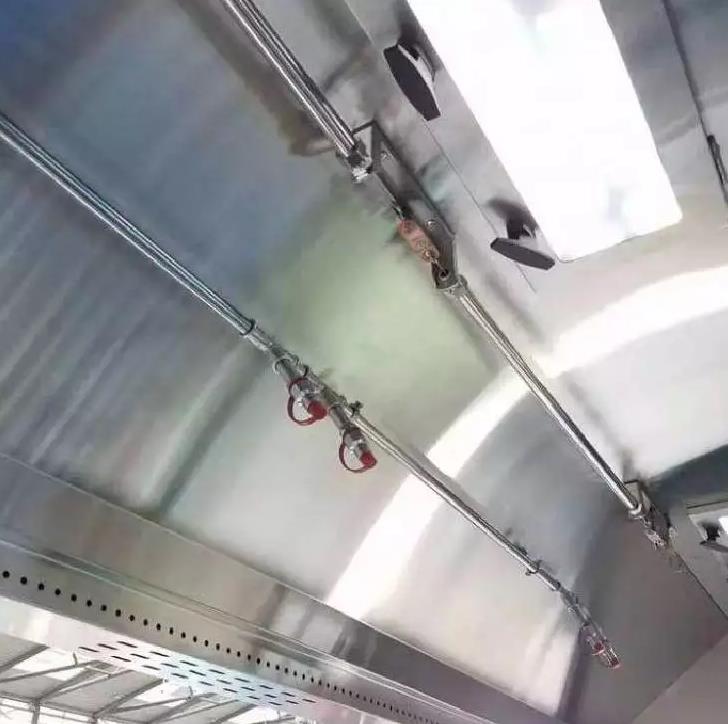
The kitchen is a high-risk area for fire, but with proper precautions and fire response strategies, the risk of fire can be minimized. Kitchen fire nozzle, as a kind of automatic fire extinguishing equipment, plays a key role in this process. They can quickly respond to fire sources, provide effective fire control and extinguishing, prevent the spread of fire, and reduce the damage caused by fire. To ensure its effectiveness, regular maintenance and maintenance must be carried out, as well as appropriate fire response strategies.
In short, the kitchen fire nozzle plays a vital role in maintaining the fire safety of the kitchen. With the right installation, maintenance and response strategies, we can rely on them to protect lives and property when they are needed most. Fire is a potential threat in the kitchen, but there are smart steps we can take to minimize this threat and make the kitchen a safer place.


